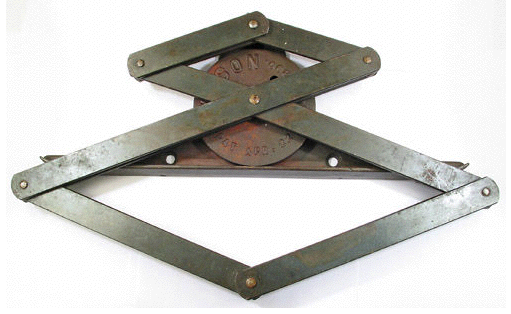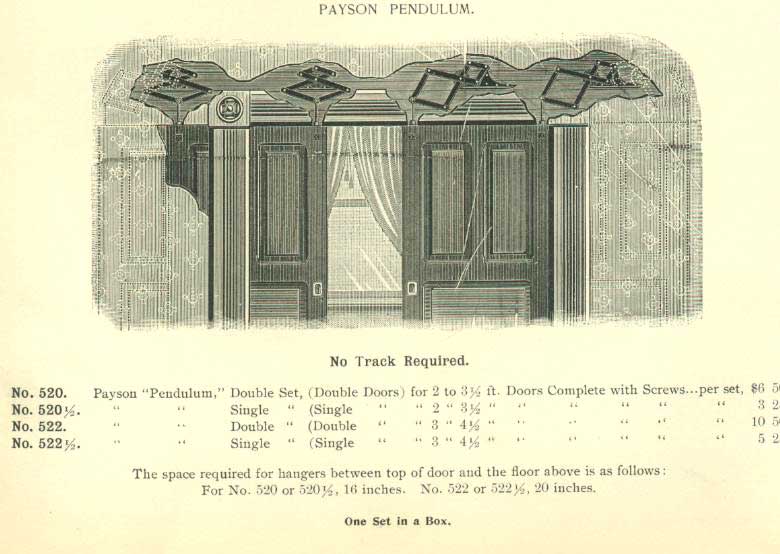
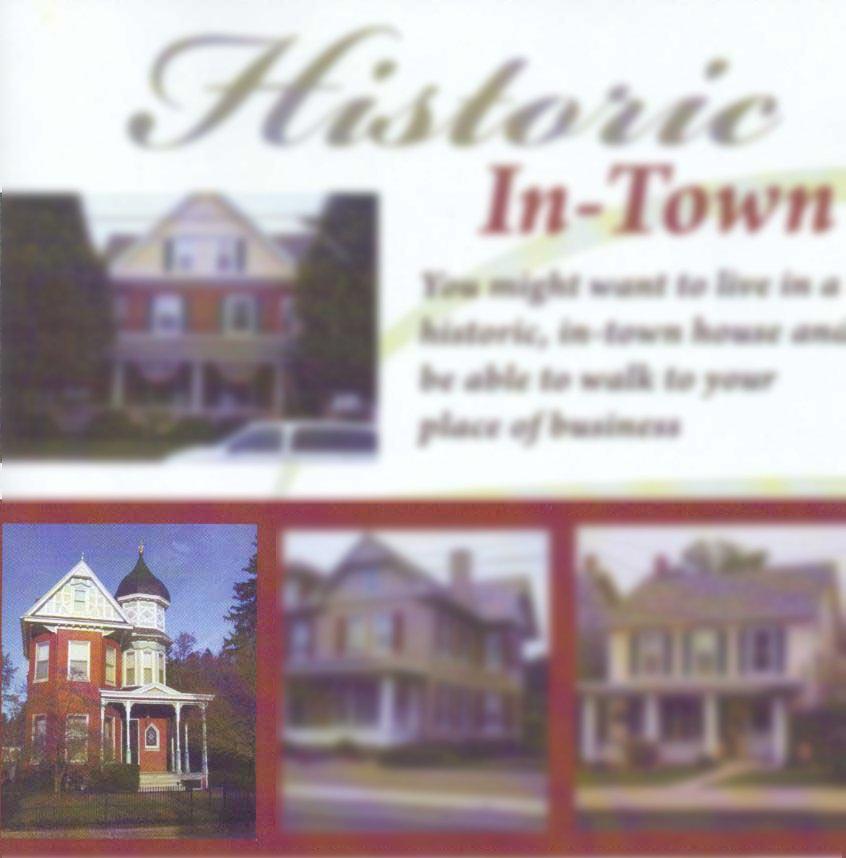
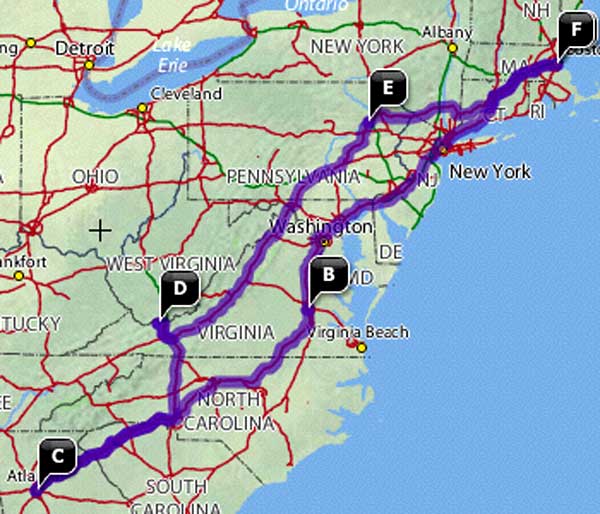
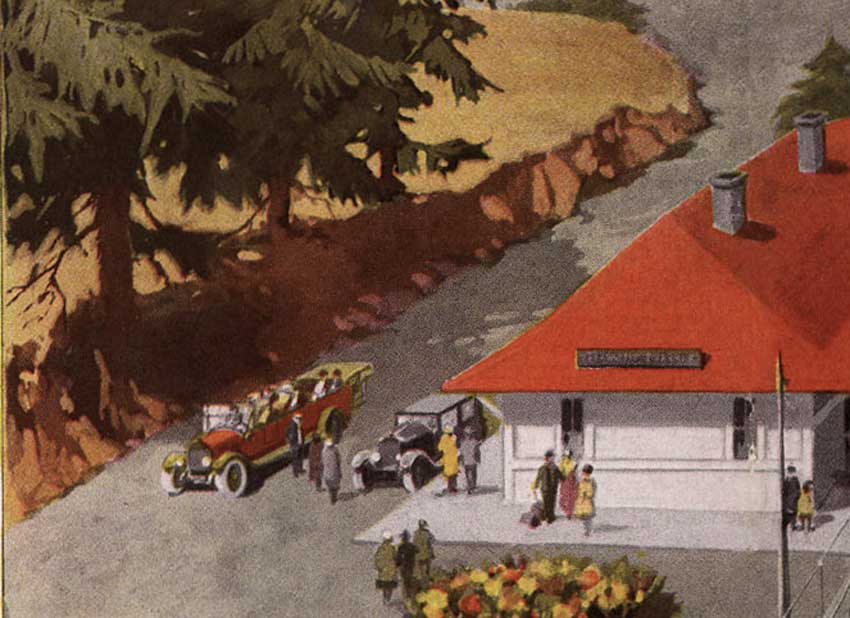
On September 21st 2010, I left Boston, heading for Atlanta. An email from a visitor to this site brought an inquiry about two pairs of pocket doors in a Craftsman style home in Atlanta.
Itinerant Pocket Door Restorer for Hire
This 12 day trip is concluded after fixing doors in Atlanta (population way up there!) and Honaker, VA (pop. 950!)
How did the (Atlanta + 'add-ons') trip come about?
On July 19th, 2010 Jeff wrote saying he wished I were closer. I responded saying there was some optimism that I might make such a trip despite the distance. Also, earlier in the year on May 13th, Don from North Carolina emailed me asking for help with two large single doors. Both (of their) households were going through real estate acquisitions and lifestyle changes.
Jeff and Jennifer were settling in Atlanta for her to attain to a four year advanced degree. He wrote "I have enjoyed reading your website. I wish you were located in Atlanta so that I could hire you to work on two sets of pocket doors that I have in a 2,000 square foot Arts & Crafts bungalow that was built in 1910."
Don wrote "My wife and I recently purchased a 1900 era home that has two large single pocket doors. One door is in the wall about halfway and is stuck we cannot get it to move either direction. The door seems to be swinging freely on the hangers but will not move. The other door will move to within a foot of closing and a foot of opening all the way but the rollers squeal and it is very hard to move."
In May I wrote a long response for Don with lots of ideas. I also asked "Do you have a guest room? If so, I can come to you and do the work as an itinerant pocket door repairer!" This was a "once upon a time" practice with itinerant stencilers who went from town to town decorating homes. I didn't hear back from Don.
When I was emailing with Jeff, he informed me that he was commuting between New York and Atlanta-pending employment in Atlanta. The Craftsman style house was this couple's "starter house" and they had already begun refinishing doors throughout the house. The pocket doors were not working well at all. With photos attached to emails, I identified the style of door hanger. Slowly but surely, we finalized a plan for me to make the trip.
There were many surprises. First-I never met Jeff! He had to be in New York during the time I was in Atlanta fixing his doors. I did not stay in his house-I made other arrangements. Second-while in Atlanta I rummaged through my email inbox and wrote to Don saying "I'm down here. Do you want your doors fixed on my return trip?" The answer was "Yes." The repairs took a day and a half. I spent two nights in their home-but not in North Carolina. It turned out the doors were in their newly acquired Victorian in southwestern Virginia where Don and Jill intend to retire in 2012! It's good to flexible-and limber also! Here's a picture of me, supported on sawhorses, blissfully "sawing away" all in the interest of pocket door restoration.
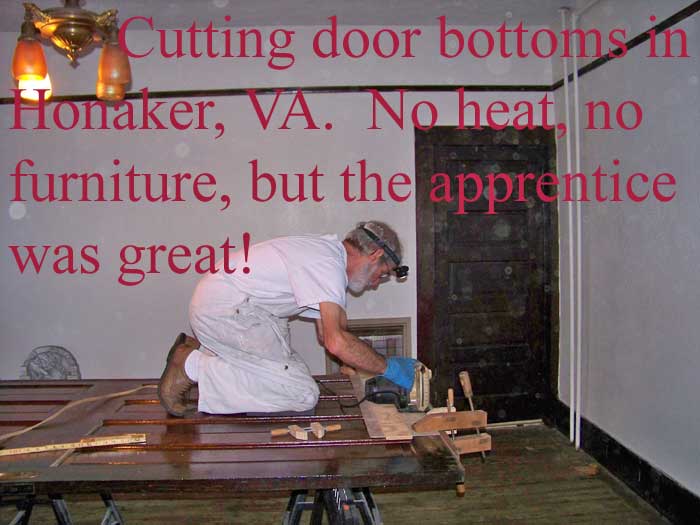
Actually, the caption in this photo contains an error--I am so used to having to cut door bottoms-in this photo I am actually removing a thin slice from a door top.
It seems I have a new agenda (trip wise, that is). In Spring of 2011 I was contacted by homeowners in St. Joseph, Illinois. Three highly descriptive and profitable exchanges of email culminated in the identification of the appropriate patent-which I sent to them in PDF format. This was highly satisfying to both parties, since they were at a loss as to how to identify the mechanism and since I was able to identify "by remote control" a pocket door system which I had not previously encountered.
My first trip - from Fall of 2010.
Itinerant Repairer trip "by the book"
completed on June 15-16, 2011

I was working near Harvard Square, Cambridge on the day this email landed in my inbox . However Joseph was very motivated to find a solution and he called me right after he sent the email. We talked and I assured him that I was interested in fixing his two bathroom pocket doors at the lower tip of Manhattan Island. In the ensuing four weeks, we communicated five more times by phone
and email. I asked if he had a guest room and a place
for me to park. Finally as mid June approached,
he told me "sooner was better than later"
because he wanted to devote the summer
months to family (grandchildren.)
I arrived early afternoon. Joe instructed me to load some tools onto a cart and we ascended 25 floors to his condominium. I groaned because I never know what I'm going to find...and I always have to return to the van for additional tools. The parking garage was 25 floors down and a block away !! But that's life in the big city (Big Apple). After 3 hours- one door was fixed and I had figured out what was needed to fix the second door-about two hours of intermittent Sawzall use (noisy reciprocating saw). It was Joe's turn to groan because other residents would be returning home soon. Therefore we had to stop work for the day. I brought my overnight bag into the guest room, made dinner and looked out at the Statue of Liberty and at the Staten Island ferry coursing back and forth.
The problem was...what it always is-not enough clearance, but with a twist! <:d) Five years earlier, Joe remodeled; and selected expensive frame and panel doors of solid cherry-for hinged doors and pocket doors. The contractor used prefabricated pocket door framing from the Johnson Hardware Company. These engineered kits with steel studs provide a very narrow pocket. But after a few years this bathroom pocket door had warped. In my opinion (after twenty years of furniture repair) warpage is going to occur even with kiln-dried wood. Factories do not split logs (like Colonial craftsmen did in order to observe which way the grain is running through the wood). Factories only use saws and saws cut wood irrespective of the grain. Once a cabinet door, a cabinet panel or a house door is assembled and glued...there is a possibility of the wood moving-even shrinking or warping.
Late in this first work session, I had spent 90 minutes crouched on the floor of a clothes closet-which shared a common wall with the bathroom pocket door. Joe admitted to me that he had called his contractor when the pocket door first starting hitting something inside the pocket. The contractor's assistant had cut an inspection hole about the size of a legal sheet of paper (8.5" x 14"). I thought to myself...this is very fitting ...because Joe was a lawyer!! <:d) Here I was, a couple of years later trying to figure out what was going on and trying to figure out how the wall was built.
Through the opening, the young man probably saw the door was hitting a stud, because he excised the lower twelve inches of the stud. Then he rigged up a horizontal piece of wood to serve as a truss-trying to pull the remainder of the stud away from the warped door. I would guess this temporarily solved the problem, but when I looked at the poor truss it was shaped like a canoe (no longer straight-no longer having any good effect). And I would be up the creek without a paddle if I could not solve this man's problem!!
In the morning, Joe called the downstairs neighbor-who was gracious and said that I could use my Sawzall as much as was needed. I secured the top 12" of the metal stud to protect its ability to support the overhead pocket door track. I located about 10 hidden screws in order to unfasten the remaining 6 feet of the metal stud. Then I clamped the stud to the plywood wall (in order to dampen vibration). My plan was to cut the stud out incrementally-in six sections, one at a time and withdraw it through the opening It's a lot of work to crouch in a closet and use a reciprocating saw to cut metal studs, but at least we turned on the air conditioning.
When the last remnant of the stud was withdrawn from the "hole in the wall", I tried the pocket door and invited Joe to do the same. He smiled. We had been successful. An hour later I was standing on the sidewalk loading my tools from the dolly into my van and looking for the Holland Tunnel to do some errands in NJ before heading for Boston. I couldn't believe that I had managed to fix that door!
Why do I call this an itinerant repairer trip "by the book?" Because it went according to plan; a great customer with a need found this page, lodged me, as well as my vehicle, in the middle of the city and we choreographed a successful repair.
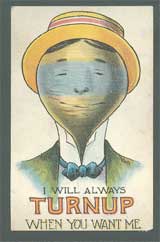
Inexplicably, I soon received two other inquiries (one from PA and one out of NJ) from people who described a similar contraption inside their walls/pockets. The same process followed-I sent patent drawings and images of old engravings showing the Payson mechanism. The same responses followed..."Bingo! That's it" The trip to IL had to be postponed. Time passed and I finally settled on traveling to Waynesboro, PA-the location which was most easily accessible...by Rt 81S.
I very much wanted to make this repair, but commitments in Boston and the very difficult summer weather delayed me. I finally sent the customer an email saying; "I need an address. :-) " Surprise, surprise...He wrote back saying...essentially, "I am in San Francisco until my forthcoming retirement to Waynesboro. But my sister lives around the corner and will let you in." She sure did! Suzanne opened the family's ancestral home, greeted me with lemonade and showed me an upper room with an air conditioner for my overnight stay. There was also a workshop in the basement in the event I might need to use any of Steve's power tools.
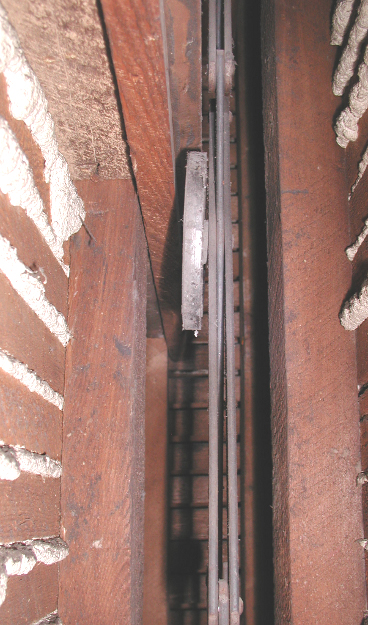
Waynesboro, as a forward-looking municipality, promotes the area as suitable for families, business, tourism and retirement. My customer's house had been included in an attractive booklet! Above, covering other parts of the booklet are my pictures of part of the Payson mechanism (while hanging pendant inside the pocket) and of the Payson "J hooks" - removed from the doors in order to clean, lubricate and adjust them.
I will eventually make a webpage about this repair, but here are some "emotional highlights"; After an 8 hr drive from Boston, I arrived about 3 PM. Fixing pocket doors, is for me...like reading a book without putting it down. And, especially since this was an unknown mechanism, I wanted to accomplish something before bedtime. By 11:30 EST I had one door working. I called Steve in San Francisco (PST) and shared the good news. The following day I fixed the second door, adjusted the doors as a pair and replaced the trim, etc. At 3 PM, I left for Summit, NJ where I "spent three days & three nights" [like the Prophet Jonah ? in the belly of the sea monster] working on doors belonging to a church rectory.
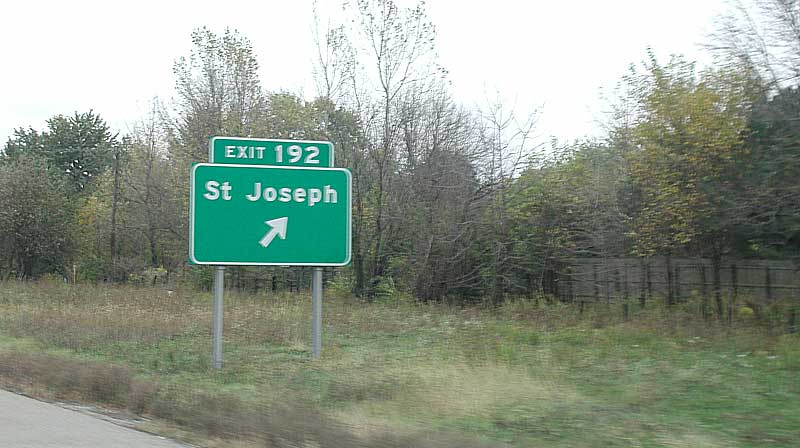
My Oct 2011 trip was 12 days in length and I drove, fully laden with tools, about 3,100 miles. The planning lasted about five months. The "anchor" destination was St. Joseph, IL. Using this Itinerant Repairer page, I published an invitation to homeowners along the route to email me. Some people dropped out. Others were added in-even during the last 7 days of planning. I delivered a spare part in NW CT, delivered a pair of doors in NW PA, fixed doors in OH for a dentist (whose office is a large Victorian) and finally arrived in the Land of Lincoln. I will devote a separate page recounting the wonderful people I worked for and explaining what I learned about the Payson mechanism. Actually, just last month in the Boston area I repaired three more Payson openings.
